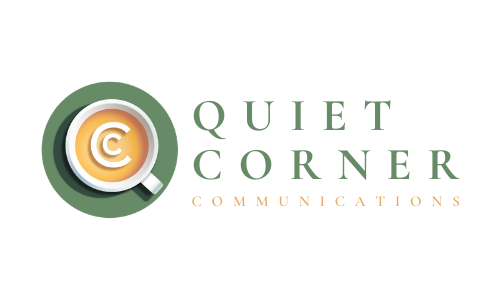5 Content Marketing Myths: Busted
We hear a lot of facts about content in our day-to-day business dealings. “Blog posts need to be at least 2,000 words to be considered authoritative!” “You can only rank for search with paid ads!” “The only social media platform that matters is TikTok, and you need to post at least twice a day!!”
These facts might certainly be true for some, if not many, businesses — but in our experience, good content marketing is rarely one-size-fits-all.
So, we’ve compiled this list of popular content “facts” — hereby referred to as myths — not just to debunk them but to help you develop a strategy to identify and meet the unique needs of your business. Let’s get bustin!
MYTH: Written content needs to be a certain length to be considered authoritative
There are a lot of opinions out there about the right length for written content. Website builder Wix analyzed data from its blog and reported, “the ideal blog post length is between 1,500 - 2,500 words, with a sweet spot right at 2,450.” In 2021, Hubspot conducted a similar analysis of its popular blog and found “the ideal blog post length should be 2,100-2,400 words.”
This 1,500-2,500 parameter comes up a lot when you Google “best length for a blog post” — but if you read Hubspot’s original report, they follow up their findings with the explicit statement, “keep in mind that not all blog posts need to be super long — in fact, 16 of our top 50 read posts (or about one-third) were under 1,500 words.”
By Hubspot’s own admission, a third of their top-ranking blog content was shorter than their recommended word count — and frankly, we don’t find this surprising given the short attention span of the average internet user.
So, instead of basing your entire blog strategy on word count, we recommend adopting a content-first approach that prioritizes communicating valuable information over hitting an arbitrary target. A 500-word, precisely phrased blog post can instill more confidence and authority than a meandering, 2,500-word missive on the same subject. While for more complicated or expansive ideas, 2,500 words might barely scratch the surface. To avoid running long and diluting your impact, or running short and diminishing your expertise, we recommend using as many words as it takes to clearly articulate your point, then cutting out any superfluous language to ensure the resulting piece is focused, concise, and impactful.
MYTH: You need an active presence on every social media platform
Many social media marketing firms out there will try to tell you you’re missing potential audience members if your business isn’t active on all the major social media platforms. But here at QCC, we think this approach to social is so wrong that it’s become an internal red flag for us. If you expect us to create content that makes a splash on every social platform out there, everyone is going to end up disappointed!
Social media works best when it’s used strategically and thoughtfully. Ideally, this takes a two-pronged approach:
Identify the right social platform(s) for your business — We usually determine this by assessing the target audience, current social platform demographic data, and the client’s objectives. Typically, we recommend focusing on 1-3 key social platforms for maximum impact.
Create an appropriate content strategy for that specific social platform(s) — Authenticity has become a big concern for social media users, so it’s essential for your content to reflect your brand values in an approachable, engaging, and appropriate way. A big part of this is ensuring the content you create resonates with audiences active on the platforms your brand prioritizes, for example:
If your target audience is on Instagram, you’re going to have to embrace the attention-capturing power of Reels.
Businesses posting on LinkedIn should put down ill-fitting memes, and instead share thought-provoking content or industry opinions that kick off a conversation in the comments.
If your business is taking advantage of the content marketing potential on Reddit, make sure to engage with relevant subreddits before promoting original content — or risk being accused of shilling.
If you’re looking for more actionable advice on social media strategy, check out my post on identifying the right platform(s) for your business.
MYTH: If you build it (a website), they will come
We recently designed a new Squarespace site for a client, and it got us thinking about the old adage, “If you build it, they will come.” This advice might work for summoning sports ghosts, but it’s about the worst expectation you can have for a new website. Look, we get it — when a big project like a website redesign concludes, it’s natural to expect immediate results. But just because a website exists doesn’t guarantee people will visit it.
Instead of a supernatural baseball diamond, we like to think of a website as the foundation of a house; structurally sound but not necessarily the most inviting. If you want people to visit, you need to furnish this house with decor visitors will appreciate — aka content they find interesting, entertaining, or informative.
Keep in mind, compelling web content doesn’t just mean blog posts. Get creative with your furnishings for maximum appeal. Embedded videos, drop-down menus, and helpful resources — like this common ailments page we created for a client in the medical cannabis space — are all great ways to make your website an attractive destination.
You also need to make sure your house is easy to find. Think of keywords as signposts in the vast internet universe; the more accurate they are, the easier it is for visitors to find your website. Learn more about the importance of matching content and search intent in our recent exploration into Google Ads.
MYTH: Paid ads are the only way to capture attention
Let’s get this out of the way: I’m not debunking the efficacy of paid ads. For big companies in highly competitive markets, paid advertising is undoubtedly a major — if not the only — avenue to success. SEMrush reports Fortune 500 companies made up $3.05 billion of the total $60 billion ad spend in 2020.
But if you’re reading this blog, chances are your ad budget is nearer the thousands than the multi-millions. You can certainly throw every precious penny you’ve got into CPC campaigns and boosted social posts — but I can all but guarantee you’ll end up disappointed.
Here’s the big problem with paid ads for smaller businesses: impressions don’t guarantee clicks, and clicks don’t guarantee meaningful engagement, let alone leads. In our experience, organic engagement is far more genuine and, therefore, more likely to result in a conversion. It also appears to be more popular; a recent Statista survey of B2C marketers found “80 percent of respondents used Instagram for organic content distribution, while 47 percent used it for paid content distribution.”
Mini case study: For the past year, we’ve managed organic content creation, post distribution, and paid post boosts for a client’s LinkedIn Business account. LinkedIn recommends boosting posts with “higher than normal engagement,” so we closely monitored performance to determine which posts had the best chance of maximizing ROI. In most cases, the organic engagement and click-through rates far exceeded the paid equivalents despite the fact that the ad spend delivered tens of thousands of impressions. For example, one post with 45,000 paid impressions and less than 500 unique organic impressions had a paid engagement and click-through of 0.7%, while the organic engagement rate was 9.5% and the click-through rate 3.5%.
We recommend viewing paid ads as a way to support the distribution of high-quality organic content. But you don’t need to take our word for it. TikTok data shared by Search Engine Journal shows “a 2x increase in ROAS for brands that also participated on the platform organically.” Conversely, paid ads also appear to improve organic performance — TikTok reports organic content is perceived as “more likeable after viewing a paid ad, leading to a 20% increase in brand affinity.”
MYTH: Anyone can produce compelling content
Now that we’ve told you now to blow your whole budget paid ads, it’s time to dismantle any preconceived notions about organic content creation with a myth-busting lightning round:
MYTH: You’re an expert in your field, so you can create expert content. Unless your field is content creation, your expertise is limited to your specific product or service. This is most painfully apparent when it comes to hard skills like writing, video editing, or attempting the latest TikTok dance. If you really want your brand to shine, hire a professional content creator to help deliver your message.
MYTH: Your marketing team should be able to handle content creation. Don Draper was a great marketer, but there’s a reason Peggy wrote most of the copy. Not all CMOs are trained writers, nor do all marketers know their way around a ring light. It’s much better to identify areas of weakness and bring in extra help than have your marketing team struggle to produce sub-par content.
MYTH: AI can produce your content! I know we’re all enthralled with ChatGPT and its unhinged cousin Bing Chat, but AI is not your organization’s solution to quality content creation. At best, machine learning is a tool for sourcing ideas — at worst, it’s a vehicle for driving misinformation. Needless to say, we’re not worried the robots are coming for our gig.
So, who can create the compelling content your business needs? The answer should be obvious, but we’ll say it again: hire professional content creators! If you’re looking to post blog content people want to read — and can easily access — hire a good writer, and maybe even an SEO coach. Want to capture the attention of youths on TikTok? Enlist the help of a young Millennial or Gen Z to ensure your videos aren’t cringe.
There’s a reason our slogan is: “You know your story. We know how to tell it.” More often than not, it’s better for business if you focus on your area of expertise and leave content creation to the professionals.


